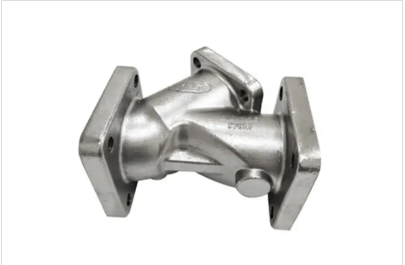Mobile:+86-311-808-126-83
Email:info@ydcastings.com
English
Need aluminium sand casting with tight tolerances and speed?
What I’ve Learned (Sometimes the Hard Way) About aluminium sand casting
If you’ve ever weighed precision against budget and lead time, you already know why foundry folks still swear by sand. To be honest, I expected the “everything die-cast” trend to steamroll it. It didn’t. In fact, for medium-volume parts, complex cavities, and beefy sections—aluminium sand casting keeps proving its worth, project after project.

Industry snapshot and where it’s headed
Two clear trends: lighter alloys with better fatigue performance (think A356-T6, A357) and smarter process control (thermal sand management, real-time pour monitoring). Automotive still leans to die-cast for thin walls, but ag equipment, building hardware, pumps, and off-road components keep migrating to aluminium sand casting because it balances design freedom with tooling cost. Many customers say the ability to tweak gating and risers mid-development is a lifesaver. I agree.
Process flow (brief, but real)
Materials: A356/A357, AlSi7Mg, AlSi10Mg; cores with phenolic-urethane binders; chromite or silica sand depending on heat and collapse needs.
Methods: 3D-printed patterns for fast iterations, manual or automated green-sand and no-bake molding, controlled pour temps ≈ 690–740°C, tailored riser sleeves, flow simulation to tame turbulence (less oxide, fewer inclusions).
Post: Heat treatment (T5/T6), shot blasting, CNC machining, and coating (anodize or powder where needed). Testing to ASTM and ISO standards—radiography for critical zones, pressure tests for housings, and dimensional checks per ISO 8062.
Product specs (Custom Metal Castings)
Origin: No.563 Xinhua Road, Shijiazhuang City, Hebei Province, P.R. China. 050051. The line covers cast and ductile iron too, but here’s the aluminium side most buyers ask about:
| Parameter | Spec (≈ values; real-world use may vary) |
|---|---|
| Alloys | A356, A357, AlSi7Mg, AlSi10Mg |
| Casting weight | 0.5–120 kg typical |
| Dimensional tolerance | ISO 8062-3 grade CT8–CT10 (machining adds precision) |
| Surface roughness | Ra 6.3–12.5 μm as-cast; Ra 1.6–3.2 μm after machining |
| Heat treatment | T5/T6 to ASTM B26/B26M mechanicals |
| NDT | RT (ASTM E155), PT, hardness (HBW), pressure test up to 10 bar |
| Service life | ≈ 8–15 years in ag/construction duty cycles |
Applications and what users say
Pump and valve bodies, gearbox housings, bracketry, HVAC impellers, and structural nodes. In ag and building hardware, aluminium sand casting wins on toughness and repairability. One buyer told me, “We redesigned a bracket over a long weekend using a printed pattern—try doing that with die-cast tooling.” Fair point.

Vendor comparison (field-notes version)
| Vendor | MOQ | Lead time | Certs | Design support | Price (≈) |
|---|---|---|---|---|---|
| YD Castings (Custom Metal Castings) | 50–100 pcs | 3–6 weeks after pattern | ISO 9001; IATF 16949-ready | CAE + gating/riser simulation | Mid, competitive |
| Regional Foundry B | 25–50 pcs | 4–8 weeks | ISO 9001 | Basic DFM | Low–mid |
| Global Supplier C | 200+ pcs | 6–10 weeks | ISO 9001, AS9100 (sites vary) | Full APQP | Mid–high |
Testing, data, and standards (the serious bit)
Typical A356-T6 tensile: UTS ≈ 250–290 MPa, YS ≈ 170–210 MPa, elongation 3–7% (ASTM B26/B26M coupons). Radiography per ASTM E155 Level 2 for pressure zones is common; dimensional checks align to ISO 8062-3. If you’re in automotive, PPAP and capability data (Cp/Cpk) on key dims are table stakes.
Two quick case notes
Ag gearbox housing: Switched from welded steel to aluminium sand casting, shaved 18% weight, machining time down 22%. Pressure-tight at 6 bar; RT Level 2 in critical webs.
Construction bracket: 3D-printed pattern enabled three design spins in 12 days; fatigue life up ≈ 30% after fillet and riser tweaks.
If you need customization, the pattern path matters as much as alloy choice. Start with gating simulation, keep pour temps honest, and don’t skip the heat-treat coupon testing—sounds basic, but it’s where a lot of programs win or lose.
Citations
-
Materials Used in Manufacturing Cap End Pipe FittingsNewsNov.24,2025
-
Material Properties of CF8M CastingNewsNov.24,2025
-
How to Inspect Pump Cap Ends for DamageNewsNov.21,2025
-
Backward Curved Impeller – Efficient Airflow Solutions for Industry | YD CastingsNewsNov.21,2025
-
Automobile Water Pump - Efficient, Quiet, Durable & ElectricNewsNov.21,2025
-
Impeller for Pumps – High-Efficiency, Durable, OEM-ReadyNewsNov.21,2025











